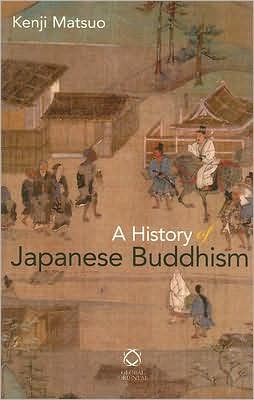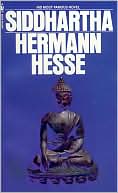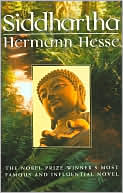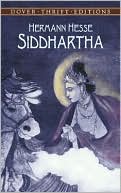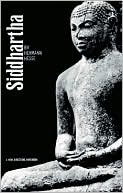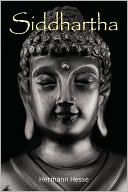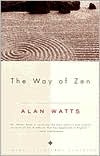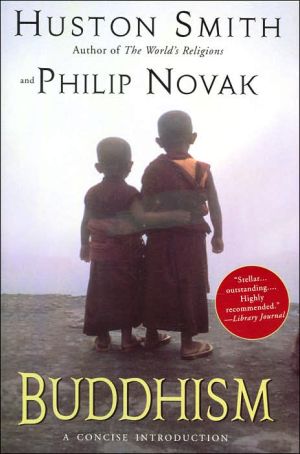A History of Japanese Buddhism
This first major study in English on Japanese Buddhism by one of Japan’s most distinguished scholars in the field of Religious Studies is to be widely welcomed.The main focus of the work is on the tradition of the monk (o-bo-san) as the main agent of Buddhism, together with the historical processes by which monks have developed Japanese Buddhism as it appears in the present day.
Search in google:
First study in English on Japanese Buddhism by a distinguished scholar in the field of Religious Studies will be widely welcomed.The main focus is on the tradition of the monk (o-bo-san) as the main agent of Buddhism, together with the historical processes by which monks have developed Japanese Buddhism as it appears in the present day.
Acknowledgements xiJapanese Calendar, Temples, Names and Words xiiList of Plates xiiiIntroduction 1Characteristics of Japanese Buddhism 6Marriage of Japanese Monks 6Buddhist Studies 8Shaving Hair 8Changing Names 9Clothing of Monks 12Functions of Temples 12Summary 14Ancient Buddhism - Official Monks 16Official Introduction of Buddhism 16Two Types of Religion 16First Japanese Nuns 17Shotoku Taishi, Father of Japanese Buddhism 18Monks as Government Officers 20Preconditions to Becoming Official Monks 21Gyoki - Builder of Temples 22The Ranking of Monks 23Official Monks 25Colours of Kesa for Official Monks 26Pledging the Observance of the Precepts 27Ordinations at Enryakuji 29Functions of Ordination 34Increase in Numbers of Immoral Monks 35Kukai and Esoteric Bjddhism 36The World of TendaiHongaku Shiso 37Shinto-Buddhism Syncretism 38Founder of Shugendo, Mountain-Based Ascticism: En-No Ozunu 39Difference Between Ojo and Jobutsu 40Amitabha Saint Kuya 41Official and Reclusive Monks 44Medieval Period of Religious Fund-Raising 44The Defiled Middle Ages: Without Fear of Defilement 47The Apostate Middle Ages: Jukai and the Kairitsu 48Use of Legends 51History of Research Into Medieval Japanese Buddhism 52'Leaving Home' 57The Rise of the Tonseso 60Shinran, Nichiren and Dogen as Tonseiso 63Leaving the Kanso 65Ippen and Ji Sects 67Essence of Kamakura New Buddhism 68Medieval Japanese Towns and the Rise of Kamakura New Buddhism 71Definition of a Town 71'Befitting the four Gods' 72Stratified Structure of Towns 73Kamakura New Buddhism and Medieval Towns 74Temples of Kamakura New Buddhism 76Purification of Defilement 77Emergence of Individuals 78Fieldwork in Kamakura 80The 'Great Buddha' of Kamakura 81Komyoji 84Soban Nenbutsu 87Tsurugaoka Hachimangu 87Kenchoji 90Engakuji 93Sanmon 93Butsuden 94Butsunichi-An 94Shozoku-In 94Black and White: the Symbolism of the Colour of the Kesa 95Kokue and Byakue 95Era of Religious Fund-raising 101Chogen 102Eisai 104Ninsho 105Religious Fund-Raising and Ballad of Sansho Dayu 108Model of the Gutsy Abbot 110Salvation of Outcasts 116'Non-People' 116A Bathhouse for Hinin 118Ritsu Priests and Hinin 119Salvation Through Faith in Manjusri 121Nebutsu Priests and the Salvation of Hinin 124Legends of Honen 126Salvation Legends by Shinran and Ippen 127Salvation of Women 132The Kanso's Concept of Women 132The Kanso's Concept of the Salvation of Women 134Official Nuns Excluded from the State Precepts-Platforms 135Exclusion from the Denbo Kanjo 136Dogen and the Tennyo Jobutsu Theory 137Salvation of Women by Honen's Order 138Honen's Concept of the Salvation of Women 139Honen's Salvation of a Prostitute 140Foundation of Nunneries by Ritsu and Zen Priests 141Salvation of Women by Disciples of Dogen, Myoe, Honen and Nichiren 142Foundation of Precepts-Platforms for Nuns 144Shinran's Order and the Salvation of Women 145View of Female Impurity and the Tonseiso 146The Logic of Funerals - the Salvation of the Deceased 149A Reassessment of 'Funerary Buddhism' 149The Kanso and Taboo of the Death Impurity 152'The Precepts of Purity Remain Untainted' 153'Those Who are Reborn in the Pure Land are Unpolluted' 156Zen Priests and Funerals 157The New Thinking of Kamakura New Buddhism - Shinran and Eizon 160The Salvation of the Individual 160Buddhist Thought of the Kanso 161The Thinking of the Founders of the New Buddhism 164Single and Multiple Practices - Jinriki and Tariki 165Comparison of Shinran and Eizon 167Buddhahood of Birth Into the Pure Land 169Observance and Violation of the Precepts 170Salvation of the Individual 173Rise of the Medieval Towns and Awareness of the 'Individual' 175Urbanized Places 175Honen, Dogen and the Townspeople of Kyoto 176Eizon and the Townspeople 177Kamakura, Ippen and Nichiren 179Kamakura New Buddhism of the Tonseiso 182Shinran and Farmers 183Outline of Japanese Buddhist History from Ancient Times Until Edo 185From the First to the Second Type of Personal Religions 189Buddhism in the Muromachi Era 191Monkan 192Muso Soseki, an 'Official Monk' of the Muromachi Shogunate 193Ikkyu Sojun, an 'Extravagant' Monk 196Nisshin with a Pot on his Head 198Rennyo and Ikko Ikki 199Toyotomi Hideyoshi Restructures the Buddhist Community 202Buddhists in the Edo Era - 'Official Monks' of the Edo Shogunate 205Temple Control Policies in the Early Edo Era 206Suden and Tenkai: Political Monks of the Shogunate 207Takuan soho and the Shie (Purple Cloth) Incident 208Religious Inquisition Book and Danka System 211Nichio of the Fuju Fuse Subsect 213Ingen, the Founder of the Obakushu Zen Sect 214Refuters of Buddhism 215Development of Research and Education 217Suzuki Shosan and the Common People 218Bankei Eitaku and Hakuin Ekaku 219Pilgrimages in Shikoku and Other Places 221Development of Shugendo in the Edo Era 223Edo Culture and Buddhism 223Modern Times and Japanese Buddhism 225The Meiji Restoration and Buddhist Monks 225Inoue Enryo: Protect the Nation and Love Reason 228Kiyozawa Manshi and His Spiritualism 230Murakami Sensho and Modern Sanskrit Studies 231Suzuki Daisetu - Introducer of Japanese Buddhism to Other Countries 232New Religions in the Buddhist Tradition 233Miyazawa Kenji and Kokuchukai 234Various New Religions 235Reviving Japanese Buddhism 237Shikoku Pilgrimage - Visiting the Ancient Sites of Kobo Daishi 239Origin of the Number Eighty-Eight 239Early Edo Period Guidebook 241Guide Maps of the Shikoku Pilgrimage 242People Who Make the Pilgrimage 243Charitable Giving During the Pilgrimage 244Afterword 247Bibliography 251Index 259
